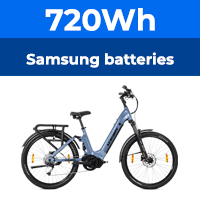What is the current state of lithium technology? It wasn't that long ago (a few years but not many) that lithium batteries were only any good for light duty but long life. They had a high mAh rating but couldn't supply much in the way of current. Now we have lithium batteries that can bang out enourmous (ish) amounts of current. Even Energiser are now coming out with high power lithium batteries (Lithium Ultimate) to power gadgets and cameras. Normal alkaline batteries have a capacity that is dependant on the load drawn over time. Look at the Duracell datasheets and they will not give a capacity, they show a graph with capacity against load.
It tunrs out that at low currents you get (say) 2000mAh. Double that current and you might get 1800mAh. Draw heavier current like some motor driven toys require and the capacity can fall to 600mAh. Now, Energiser have a graph that shows this but also shows that their lithium batteries have a stable capacity regardless of current drawn so they will state the mAh capacity of their batteries. Frankly I was amazed at what I found out about alkaline batteries and their variable capacity.
Bit of preamble here: I design electronic control systems for fire and smoke curtains. We needed to do a bumper bar sensor that fitted to the bottom of a curtain so that it would stop the curtain from coming down for 10 seconds if it hit something. I decided to use a small transmitter in the bottom bar and a 24V receiver near the control box. The transmitter runs on two 3V lithium AA size batteries and the life expectancy is 9 years with intermittent use. That's 1 year short of the shelf life. However, these particular cells couldn't provide high current unless in very short bursts. Now we ask ebike etc., lithium cells to provide high current for long periods of time. To me it seems like there's been a big leap in the technology and I wonder just how robust a technology it is at this time. It is apparent that lithium technology is advancing in leaps and bounds. This is evident in comments I've seen that say lithium batteries from a few years ago died relatively quickly while new batteries are showing signs of longer life. Is Lithium technology becoming more robust or are they about to hit the wall with it? Mix that in with Energiser who suddenly bring out high current Lithium AA cells and you wonder are larger batteries out before they really ought to be. Energiser have obviously taken time to get to the point where they feel confident in their new battery.
So, where exactly is lithium technology? Is it going to be the be all and end all of battery technology or is it a technology that has been released too soon. Too soon, there's a thing to conjusre with. It needs to be in the market place to provide the cash from early adopters to spur further research and provide better batteries. At what point do we get robust and reliable batteries? Are we there now? Am I blowing bubbles?
Discuss
Vikki.
It tunrs out that at low currents you get (say) 2000mAh. Double that current and you might get 1800mAh. Draw heavier current like some motor driven toys require and the capacity can fall to 600mAh. Now, Energiser have a graph that shows this but also shows that their lithium batteries have a stable capacity regardless of current drawn so they will state the mAh capacity of their batteries. Frankly I was amazed at what I found out about alkaline batteries and their variable capacity.
Bit of preamble here: I design electronic control systems for fire and smoke curtains. We needed to do a bumper bar sensor that fitted to the bottom of a curtain so that it would stop the curtain from coming down for 10 seconds if it hit something. I decided to use a small transmitter in the bottom bar and a 24V receiver near the control box. The transmitter runs on two 3V lithium AA size batteries and the life expectancy is 9 years with intermittent use. That's 1 year short of the shelf life. However, these particular cells couldn't provide high current unless in very short bursts. Now we ask ebike etc., lithium cells to provide high current for long periods of time. To me it seems like there's been a big leap in the technology and I wonder just how robust a technology it is at this time. It is apparent that lithium technology is advancing in leaps and bounds. This is evident in comments I've seen that say lithium batteries from a few years ago died relatively quickly while new batteries are showing signs of longer life. Is Lithium technology becoming more robust or are they about to hit the wall with it? Mix that in with Energiser who suddenly bring out high current Lithium AA cells and you wonder are larger batteries out before they really ought to be. Energiser have obviously taken time to get to the point where they feel confident in their new battery.
So, where exactly is lithium technology? Is it going to be the be all and end all of battery technology or is it a technology that has been released too soon. Too soon, there's a thing to conjusre with. It needs to be in the market place to provide the cash from early adopters to spur further research and provide better batteries. At what point do we get robust and reliable batteries? Are we there now? Am I blowing bubbles?
Discuss
Vikki.







